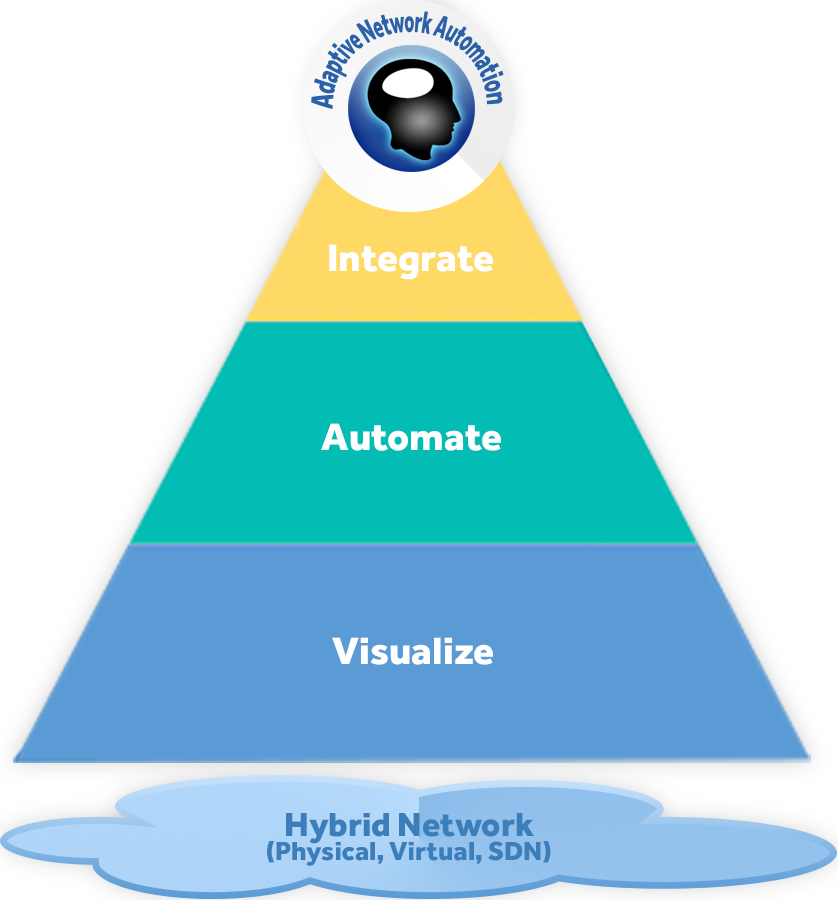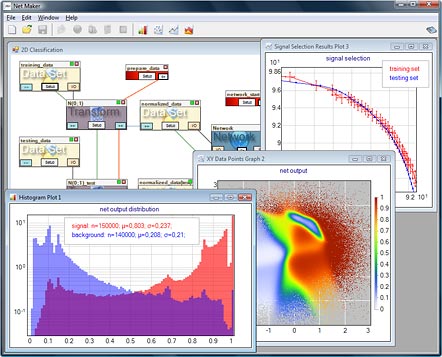Simulating Neural Networks With Mathematica Ware


Simulating Neural Networks With Mathematica
- D. O. Hebb, The Organization of Behavior, a Neuropsychological Theory, John Wiley: New York, NY, 1949.Google Scholar
- B. Kosko, Neural Networks and Fuzzy Systems, Prentice-Hall: Englewood Cliffs, NJ, 1992.zbMATHGoogle Scholar
- F. Rosenblatt, “The perceptron: a probabilistic model for information storage and organization in the brain,” Psychology Review, vol. 65, pp. 386–408, 1958.MathSciNetCrossRefGoogle Scholar
- R. P. Lippmann, “An introduction to computing with neural nets,” IEEE Acoustics, Speech, and Signal Processing Magazine, pp. 4–22, April 1987.Google Scholar
- D. E. Rumelhart, J. L. McClelland, and the PDP Research Group, Parallel Distributed Processing, vol. 1, The MIT Press: Cambridge, MA, 1989.Google Scholar
- R. Hecht-Nielsen, Neurocomputing, Addison-Wesley Publishing Company: New York, NY, 1990.Google Scholar
- D. R. Hush and B. G. Home, “Progress in supervised neural networks,” IEEE Signal Processing Magazine, pp. 8–39, Jan. 1993.Google Scholar
- D. B. Parker, “Optimal algorithms for adaptive networks: second order back propagation, second order direct propagation, and second order heb-bian learning,” Proc. IEEE the First Inter. Conf. Neural Networks, vol. 2, pp. 593–600, San Diego, CA, 1987.Google Scholar
- R. A. Jacobs, “Increased rates of convergence through learning rate adaptation,” Neural Networks, vol. 1, pp. 295–307, 1988.CrossRefGoogle Scholar
- J. M. Zurada, Introduction to Artificial Neural Systems, West Publishing Company: New York, NY, 1992.Google Scholar
- R. L. Watrous, “Learning algorithms for connectionist networks: applied gradient methods of nonlinear optimization,” Proc. IEEE Inter. Conf. Neural Networks, vol. 2, pp. 619–627, June 1987.Google Scholar
- J. A. Freeman, Simulating neural networks with Mathematica, Addison-Wesley Publishing Company: New York, NY, 1994.Google Scholar
- Y. Le Cun, J. S. Denker, and S. A. Solla, “Optimal brain damage,” in Advances in Neural Information Processing Systems Vol. 2 (D. Touretzky, eds.) pp. 598–605, Morgan Kaufmann: San Mateo, CA, 1990.Google Scholar
- Y. Le Cun, B. Boser, J. S. Denker, D. Henderson, R. E. Howard, W. Hubbard, and L. D. Jackel, “Backpropagation applied to handwritten zip code recognition,” Neural Computation, vol. 1, no. 4, pp. 541–551, 1989.CrossRefGoogle Scholar
- J. J. Hopfield, “Neurons with graded response have collective computational properties like those of two state neurons,” Proc. National Academy of Science, vol. 81, pp. 3088–3092, 1984.CrossRefGoogle Scholar
- J. J. Hopfield and D. W. Tank, “Neural computation of decisions in optimization problems,” Biological Cybernetics, vol. 52, pp. 141–154, 1985.MathSciNetzbMATHGoogle Scholar
- D. W. Tank and J. J. Hopfield, “Simple ‘neural’ optimization networks: an A/D converter, signal decision circuit, and a linear programming circuit,” IEEE Trans. Circuits and Systems, vol. 33, no. 5, pp. 533–541, May 1986.CrossRefGoogle Scholar
- B. W. Lee and B. J. Sheu, Hardware Annealing in Analog VLSI Neuro-computing, Kluwer Academic Publisher: Boston, MA, 1991.CrossRefGoogle Scholar
- B. Kosko, “Bidirectional Associative Memories,” IEEE Trans. Systems, Man, and Cybernetics, vol. 18, no. 1, pp. 49–60, 1988MathSciNetCrossRefGoogle Scholar
- T. Kohonen, Self-Organization and Associative Memory, Springer-Verlag: Berlin Germany, 1984.zbMATHGoogle Scholar
- T. Kohonen, “The self-organizing map,” IEEE Proceeding, vol. 78, no. 9, pp. 1464–1480, 1990.CrossRefGoogle Scholar
- T. Serrano, S. Grossberg, “ART2: self-organization of stable category recognition codes for analog input patterns,” Applied Optics, vol. 26, no. 23, pp. 4919–4930, Dec. 1987.CrossRefGoogle Scholar
- G. A. Carpenter, S. Grossberg, D. B. Rosen, “Fuzzy ART: fast stable learning and categorization of analog patterns by an adaptive resonance system,” Neural Networks, vol. 4, pp. 759–771, 1991.CrossRefGoogle Scholar
- G. A. Carpenter, S. Grossberg, “ART3: hierarchical search using chemical transmitters in self-organizing pattern recognition architectures,” Neural Networks, vol. 3, pp. 129–152, 1990.CrossRefGoogle Scholar
- G. A. Carpenter, S. Grossberg, J. H. Reynolds, “ARTMAP: supervised real-time learning and classification of nonstationary data by a self-organizing neural network,” Neural Networks, vol. 4, pp. 565–588, 1991.CrossRefGoogle Scholar
- G. A. Carpenter, S. Grossberg, N. Markuzon, J. H. Reynolds, D. B. Rosen, “Fuzzy ARTMAP: a neural network architecture for incremental supervised learning of analog multidimensional maps,” IEEE Trans. on Neural Networks, vol. 3, no. 5, pp. 698–712, Sept. 1992.CrossRefGoogle Scholar
- G. F. Hinton, T. J. Sejnowski, and D. H. Ackley, “Boltzmann machines: constraint satisfaction networks that learn,” Carnegie Mellon University Technical Report, vol. CMU-CS-84-119, Carnegie Mellon University, Pittsburgh PA, May 1984.Google Scholar
- C. G. E. Boender, A. H. G. Rinnooy Kan, and G. T. Timmer, “A stochastic method for global optimization,” Mathematical Programming, vol. 22, pp. 125–140, 1982.MathSciNetzbMATHCrossRefGoogle Scholar
- D. H. Ackley, G. E. Hinton, and T. J. Sejnowski, “A learning algorithm for Boltzmann Machines,” Cognitive Science, vol. 9, pp. 147–168, Ablex Publishing Corporation: Norwood, NJ, 1985.Google Scholar
- S. Kullback, Information Theory and Statistics, Wiley: New York, NY, 1959.zbMATHGoogle Scholar
Mathematica Neural Network Example
Simulating Neural Networks With Mathematica Download Freeware. 6/3/2017 0 Comments A Resource for the Technical Computing Community. For more on popular topics, see MATLAB and Simulink product resources. For your computer project, you will do one of the following: 1) Devise a novel application for a neural network model studied in the course; 2) Write a program to simulate a model from the neural network literature; 3) Design and program a method for solving some.
Wolfram Neural Network

Simulating Neural Networks With Mathematica Warehouse
- Duncan, S.,Kurz, E.,Rivardo, M., &Strasser, R. (1996, November).Semantic priming in a simple two-layer neural network. Poster presented at 37th Annual Meeting of the Psychonomic Society, Chicago.Google Scholar
- Freeman, J. A. (1994).Simulating neural networks with Mathematica. New York: Addison-Wesley.Google Scholar
- Gronlund, S. D., Sheu, C.-F., &Ratcliff, R. (1990). Implementation of global memory models with software that does symbolic computation.Behavior Research Methods, Instruments, & Computers,22, 228–235.Google Scholar
- Hinton, G. E., McClelland, J. L., &Rumelhart, D. E. (1986). Distributed representations. In D. E. Rumelhart & J. L. McClelland (Eds.),Parallel distributed processing: Explorations in the microstructure of cognition. Vol. 1: Foundations (pp. 77–109). Cambridge, MA: MIT Press.Google Scholar
- Kim, C. &Myung, I. J. (1995). Incorporating real-time random time effects in neural networks: A temporal summation mechanism. In J. D. Moore & J. F. Lehman (Eds.),Proceedings of the Seventeenth Annual Conference of the Cognitive Science Society (pp. 472–477). Hillsdale, NJ: Erlbaum.Google Scholar
- Lorig, T. S., &Urbach, T. P. (1995). Event-related potential analysis usingMathematica.Behavior Research Methods, Instruments, & Computers,27, 358–366.CrossRefGoogle Scholar
- Masters, T. (1993).Practical neural network recipes in C++. San Diego: Academic Press.Google Scholar
- Ratcliff, R. (1994). Using computers in empirical and theoretical work in cognitive psychology.Behavior Research Methods, Instruments, & Computers,26, 94–106.Google Scholar
- Rumelhart, D. E., McClelland, J. L. (Eds.) (1986).Parallel distributed processing: Explorations in the microstructure of cognition. Vol. 1: Foundations. Cambridge, MA: MIT Press.Google Scholar
- Wolfram, S. (1994).Mathematica (Version 2.2.2) [Computer programming language]. Champaign, IL: Wolfram Research, Inc.Google Scholar
- Wolfram, S. (1996).Mathematica (Version 3) [Computer programming language]. Cambridge: Cambridge University Press.Google Scholar